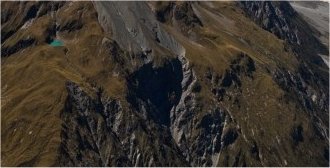
January Editorial
Soil production at high altitudes can be record-breaking.

January Editorial
Soil production at high altitudes can be record-breaking.
|
|
Soil production, particularly the speed of the soil production, has been a feature of the latest research at the Earth Sciences faculty of the University of Washington. There are two basic models of the rate at which soil is produced from bedrock. There is the exponential model, which is based on a theory which postulates that the rate of soil production decreases exponentially with the thickness of the soil. Secondly there is the so-called Ďhumped modelí which states that the maximum soil production occurs when an intermediate level of soil has already been produced. |
|
|
In the exponential model the weathering of bedrock into soil is greatest where there is no soil. Since the breaking down of bedrock is fundamental to the production of soil, the thinner the soil, the more exposed the bedrock is to temperature changes, wind and especially water. Moisture gets into cracks in rock and splits the rock as the water freezes into ice. However water penetration of fissures in rock slows down with the thickening of the soil, and therefore the process of weathering bedrock slows as well. In 1877, American geologist G.K. Gilbert proposed an alternative, the humped method. He argued that the weathering of bedrock was faster under an intermediate layer of soil than with exposed bedrock. He reasoned that water, which plays such a critical role in weathering, runs off from exposed bedrock; especially when the rocks are steeply sloped. This reduces the rate of the decomposition of bedrock, while soil allows water to soak into rock cracks even on an incline. A number of landscape evolution models have adopted the humped model. Washington University researcher Isaac Larsen and his colleagues decided to revisit the topic of soil production, but at high altitudes. Their research took them to the New Zealandís Southern Alps - an extremely rugged mountain range where the rocks slope at 35 degrees and average rainfall is about 10 meters (33 feet) per year. (By comparison, the globally averaged annual precipitation over land is approximately 0.7 meters and the average annual rainfall in Mawsynram - an Indian village alleged to be the wettest place on Earth - is 11.72 meters.) So it can be safely said that the New Zealand's Southern Alps are very wet indeed. The researchers were dropped by helicopter on remote mountain tops well above the tree-line to collect soil samples. The samples were then taken to a laboratory where the amount of Beryllium-10 was measured. Beryllium-10 is a radioactive isotope of beryllium which is formed by exposure to cosmic rays and then slowly decays to become stable Boron-10. Beryllium-10 accumulates at the soil surface where it remains because of its long half-life (1.387 million years). Consequently Beryllium-10 and its daughter product Boron-10 have been very useful for studies of soil erosion and soil formation, as researchers can measure the amounts of each to establish how long it has taken for the soil to form. Larsen and his co-workers have recently published their results in the journal Science (ref). These results showed that soil in the Southern Alps in New Zealand is produced from bedrock more rapidly than previously thought. Measurements showed soil production rates on ridge tops which ranged from 0.1 to 2.5 millimeters (1/10 of an inch) per year, but decreasing exponentially with increasing soil thickness. While 2.5 mm/year may not sound fast, in geological terms this is a very rapid rate. The authors believe that the speedy weathering is helped by small but significant amounts of vegetation in the studied regions, as plant roots help to break up the bedrock. Larsen's research indicates that soil production can happen at rates almost twice as fast as previously thought. Furthermore, soil production and weathering rates continue to increase as the landscape gets steeper and erodes faster, which suggests that other very steep locations such as the Himalayas and the mountains of Taiwan may also have very fast soil formation. The authors point out that their findings are not just about a new speed record in soil formation, but may have much wider implications. Although rapidly-eroding mountain tops occupy a small fraction of the Earthís surface, they account for at least half of the total amount of the planetís weathering and sediment production. So these high weathering rates may have further implications for how we measure the entire carbon cycle (in which the Earthís crust pushes up new mountains, which then crumble and the sediment washes with rain and rivers into the sea eventually settling at the bottom to start new rock formation). Journal Reference: | |
| _______________________________ | ||||
| Home | | | Shopping | | | Database |
© Biscuit Software 2004-2015
All rights reserved